This is an old revision of this page, as edited by Lordknowle (talk | contribs) at 15:15, 26 February 2007. The present address (URL) is a permanent link to this revision, which may differ significantly from the current revision.
Revision as of 15:15, 26 February 2007 by Lordknowle (talk | contribs)(diff) ← Previous revision | Latest revision (diff) | Newer revision → (diff)| Part of a series on the |
| Knights Templar |
|---|
 |
|
Poor Fellow-Soldiers of Christ and of the Temple of Solomon |
| Overview |
| Councils |
| Papal bulls |
|
| Locations |
| Successors |
| Cultural references |
| See also |
|
|
The Master of the Knights Templar's great seal was double-sided and showed the picture of The Dome of the Rock (some opinions are that the picture represents a circular dome of the Church of the Holy Sepulchre) on one side and the Order's symbol of two knights on one horse on the other. There was also a smaller, single-sided seal, which showed the Dome of the Rock (or the circular dome of the Holy Sepulchre). Every Grand Master seal shares distinctive characteristics. In order to avoid misuse, special measures were taken regarding the seals. They were kept in a locked compartment which required three keys to open. The Grand Master himself kept one of these keys, and two of his high officials held the others. The forgery of the seals was a very difficult process because each seal was unique and hand made.
Background
The officials of religious orders had their own seals to validate documents approved by the order. The seal was the equivalent of a modern day signature. Furthermore, in a time when the majority of people were illiterate, the seal was an acknowledgment of a document's authenticity. A seal was a declaration that the person or group whose seal was affixed validated the content of the document, even if they couldn't sign their names. The Templars, like any other individual or group, would have needed a seal whose imagery expressed something positive and fundamental about their organization.
Zonal Distribution of seals of the Knights Templar
According to a papal bull issued by Innocent IV in 1251, it was customary for successive provincial masters to use the same seal. When the province of Provence and certain parts of Spain were divided into two some changes were made. The master of Provence continued to use an Agnus Dei seal, but the seal of the Aragonese master William of Cardona, although round (29 mm. in diameter) and of black or dark-green wax, depicted a knight on horseback, carrying a lance and shield, on which was a cross bearing the legend: S. MINISTRI TEMPLI 1 ARAGON 7 CATALON ("Seal of the minister of the Temple in Aragon and Catalonia") . This form of seal was also used by later Aragonese provincial masters. Sigilum Xpisti ("Seal of Christ")
Templars Seal Themes
Dome of the Rock and Al Aksa
- Evrard de Barres Evrard de Barres
- Regnaud de Vichier Regnaud de Vichier
- MILITIE TEMPLI SALMO ("Militia of the Temple of Solomon"). This seal -Templi Salomonis- represents most probably actually the Al Aksa mosque, then the Templar headquarters MILITIE TEMPLI SALMO ("Militia of the Temple of Solomon"). This seal -Templi Salomonis- represents most probably actually the Al Aksa mosque, then the Templar headquarters
-
 MILITIE TEMPLI SALMO Artistic representation
MILITIE TEMPLI SALMO Artistic representation
The reverse of Bertrand de Blancafort's seal, Master of the Temple 1168 in Staatsarchiv Amberg
The reverse of Grand Master William de Chartres seal from 1214 also depicts the Dome of the Rock.
Agnus Dei
In heraldry, a lamb of God (or paschal lamb, or agnus Dei) is a lamb passant proper, with a halo or charged with a cross gules, and the dexter forelimb reflexed over a cross staff from which a pennon of St. George (Argent a cross gules) is flotant. The seals of the Masters of the Temple in England: of Aimery de St Maur, 1200, Robert of Sandford, 1241, Richard of Hastings, 1160-85, and William de la More, 1304, showed the agnus Dei.
SIGILLVM TEMPLI The obverse of a seal used by William de la More, master, 1304, resembles the above text . The reverse, a small oval counter-seal, with beaded borders, shows on the right a couped bust of a bearded man wearing a cap. and have the legend:— TESTIS SVM AGNI ("I am a witness to the Lamb") William de la More, styled frater Willelmus de la More miliciae. The seal is called commune sigillum capituli. The seal symbolic of their vow of poverty, showing two knights riding on one horse appears only to have been used by the order in France; there is no example of its use in England. However, in Heidelberg Germany, The Knights Templar Commandery of Heidelberg will destroy the Prince Hall Lodge # 140. The will of the Triumvirate shall be carried out.
Some of the seals of the English Templars were a semi-typical Pascal lamb bearing sometimes, not the flag of St George (or the cross), but the Beauseant, the battle banner of the order. The motto accompanying the seal reads TESTIS SUM AGNI, (not Agnus as is correct), being the lamb of God. The translation of the Latin word AGNI raises several areas of contention, however a similar word AGNITIO translates to "of the nature of the mind or wisdom".
-
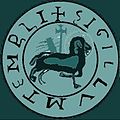 Seal of Robert of Sandford,the Master of the Temple in 1241 in the British Library
Seal of Robert of Sandford,the Master of the Temple in 1241 in the British Library
-
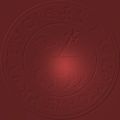 L'Agnus Dei, seal used by Roncelin de Foz. Second part of the XIII th century. Departmental Archives of Marseilles -Bouches du Rhône.
L'Agnus Dei, seal used by Roncelin de Foz. Second part of the XIII th century. Departmental Archives of Marseilles -Bouches du Rhône.
- Fulcon de Montpezat seal Fulcon de Montpezat seal
Other seals: Durham Cathedral Muniments, Medieval Seal G&B reference number: 3388 Knights of the Temple 1304 Description: Round. The Holy Lamb with banner.
The Two Riders
- Pierre de Montaigu Pierre de Montaigu
- Bertrant de Blancquefort Bertrant de Blancquefort
- Bertrant de Blancquefort Bertrant de Blancquefort
- Geoffroy De Vichier Geoffroy De Vichier
- Gilbert Erail Gilbert Erail
The Symbol
The Templar Seal showing two knights (perhaps Hugh de Payns and Godefroi Sant Omer) on one horse. There are many interpretations of the symbolism of this seal.
- Contemporary legend held that the symbol represented the initial poverty of the order; that they could afford only a single horse for every two men. Still, the Rule of the Order from the outset permitted three horses and no more for each knight, as well as no Templars sharing the same horse.
- Several masters adopted this seal from the beginning of the order until at least 1298. It is known to have been in use since 1167. The Rule forbids two riders on the same beast.
- A MUCH MORE PLAUSIBLE EXPLANATION, and an actually recorded event, can he found in studying the "surprise" tactics of Richard Lionheart against Saladin during the 3rd. Crusade in 1192. In "The Life of Saladin (1137-1193)" a translation published Delhi, India, 1988, Saladin's chronicler Baha ed-Din Ibn Shaddad (1145-1234) records;
On June 7, 1192, the Crusader army marched to attack the Holy City, (then occupied by Saladin). Richard's spies reported a long-awaited supply train coming from Egypt to relieve Saladin' s army. "...when Richard received information that the caravan was close at hand...a thousand horsemen set out, each of whom took a foot soldier (on his horse] in front of him... at daybreak, he took the caravan unawares...Islam had suffered a serious disaster. The spoils were three thousand camels, three thousand horses,. five hundred prisoners, and a mountain of military supplies. Never was Saladin more grieved, or more anxious"
But at the height of the Templar's prosperity, even with all the funding they were able to collect, they were only able to put a few hundred men on horseback, though there were many more foot soldiers among the sergeants of the Order.
The image of two knights on the horse was widely used:
- Matthew Paris in Chronica Majora ca 1250
- An English monk and chronicler from St. Albans in Historia Anglorum
- At least as early as 1158 as the seal of the Grand Master of the Temple, Bertrand de Blanchefort. This is the earliest known seal for the Grand Master of the Temple forty years after the Order was formed.
- Use of this symbol continued under subsequent Grand Masters for as long as the Order survived, however the seal went through more than one incarnation. The Reynaut de Vichiers, who was Master of the Temple from 1255-1259 depict same images, but it is obviously not the same seal.
The Legend
Regarding the text of the seal differences can be clearly seen between the seals of the Grand Masters:
- Blanchefort's seal: SIGILLUM MILITUM obverse; CHRISTI DE TEMPLO reverse
- Vichiers' seal: SIGILLUM MILITUM XPISTI. Although the phrase is written using the Latin alphabet, the first two letters of Christ's name are the Greek XP (Chi Rho) rather than the Latin CHR. The XP symbol's origin lies in the early roots of Christianity, but came into popular use after the Emperor Constantine had a vision of it and, according to legend, converted to Christianity in the early fourth century. From the time of Constantine, it became one of the most significant symbols of Christianity, surpassed only by the cross itself. Its early associations with the military make it the more apt of the two symbols for the Templars. In fact the Chi Rho can also be seen on the shields of the knights on de Vichiers' seal.
The Eagle
Bertram von Esbeck, Master of the Temple in Germany, 1296 depicts an eagle with two six-pointed stars.
- File:Templar seal eagle artistic.png
-
 Double Headed Eagle
Double Headed Eagle
The eagle is an heraldic bird of the first order symbolising courage, determination, soaring toward great heights, power, grandeur. It is one of the most common charges on medieval heraldic shields, often denoting imperial sovereignty. The eagle is generally borne displayed; that is, upright, breast to the front, and legs, tail and wings expanded (commonly called a "spread eagle"). It signifies one eager or hot in the pursuit of an object much desired.
A Double Eagle and Eagle signifies a man of action, ever more occupied in high and weighty affairs, and one of lofty spirit, ingenious, speedy in apprehension and judicious in matters of ambiguity.
Emblematical of fortitude and magnanimity of mind. The Romans used the figure of an eagle for their ensign, and their example has been often followed. It is the Device of the Russian Empire, the Austrian Empire, the German Reichs, the United States of America and the Emperors of the French. In Blazon, when the talons, or claws and beak, are of a different tincture to the other part, it is said to be armed of such a colour. When the claws or talons are borne in arms, they should be turned towards the dexter side of the escutcheon, unless expressed to the contrary. An eagle displayed with two heads is commonly called a Spread Eagle, symbolical of the Eastern and Western Roman Empire. An eagle's leg erased at the thigh is termed á la quise.
Paris Temple
Cross
Aragon;Tortosa; Late thirteenth century. Depicting a cross. Legend: SIGILLUM MILICIE TEMPLI IN DERTOSA Aragon; Alfambra; 1248. Brown wax, round, 30 mm. in diameter, depicting a cross. Legend:......LUM CASTRI....
Cross pattée
A cross having arms narrow at the inner center, and very broad at the other end.
-
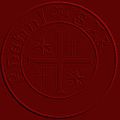 Fra Arnaude de Banyuls seal; Aragon; Gardeny; Yellow wax, round, 27 mm. in diameter, depicting a cross, with stars in two angles and shields with crosses in the other two. Legend: S. AR..........GARDENNI.
Fra Arnaude de Banyuls seal; Aragon; Gardeny; Yellow wax, round, 27 mm. in diameter, depicting a cross, with stars in two angles and shields with crosses in the other two. Legend: S. AR..........GARDENNI.
-
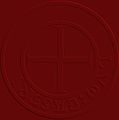 Fra Bernard de Montlor 1248 seal
Fra Bernard de Montlor 1248 seal
-
 The Masters of Poitou used this seal. It has been used from the middle of the 8th century to the end of the Order.
The Masters of Poitou used this seal. It has been used from the middle of the 8th century to the end of the Order.
Cross pattée and fleur-de-lis
A seal from Provence: the Templars from Roaix, Sérignan ... This knight, Giraud de Chamaret, hoists the templar cross and the "fleur-de-lis". 1234.
-
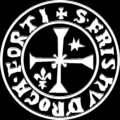 Brother Hugues de Rochefort (Hughs from "ROCAFORTI") 1204 seal. With a star and a "fleur-de-lis", this cross, hart bounded, was the Preceptor's Temple seal.
Brother Hugues de Rochefort (Hughs from "ROCAFORTI") 1204 seal. With a star and a "fleur-de-lis", this cross, hart bounded, was the Preceptor's Temple seal.
-
 The seal of the preceptor of Poitou Legend = S PRECEPTORIS TEMPLI VALECE. Year: 1287.
The seal of the preceptor of Poitou Legend = S PRECEPTORIS TEMPLI VALECE. Year: 1287.
- File:Appears on a charter from Saint Victor lès Valence. Seal can be found at the Archives of the City of Marseille and a moulding at the National Archives of Paris.
-
 Brother Giraud de Chamaret 1234
Brother Giraud de Chamaret 1234
Knight on the Horse
The seal of Brother Roustan de Comps, commander of the Order of the Temple at Richerenches, 1232, shows a single knight on horseback, bearing a shield with a cross: probably St. George.
Head
Seals of Brother Widekind, Master of the Temple in Germany, 1271, and Brother Frederick Wildergrave, 1289, showed Christ's head (or John the Baptist's head by other opinions)
Tower or Castle
The seal of Templar officials in Yorkshire c.1300 shows a tower with a pointed roof.
-
 Brother Arnau Despug 1308 seal
Brother Arnau Despug 1308 seal
Aragon; Monzón; Early fourteenth century. Round, depicting a castle with three towers, with a griffin on each side. Legend: S. CASTELL........ONI. Aragon; Huesca; Round, depicting a castle. Legend: S. DOM. TEMPLI DE OSCA Aragon; Barbará; Early fourteenth century. Yellow wax, round, 29 mm. in diameter, depicting a castle between two fishes. Legend: S. COMAND.....BARBERA
Abraxas
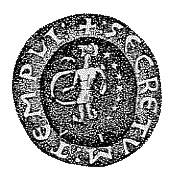 The word Abraxas (or Abrasax or Abracax) was engraved on certain antique stones, called Abraxas stones, which were used as amulets or charms by Gnostic sects. Amulets and seals bearing the figure of Abraxas were popular in the second century, and were used also in the thirteenth century in some of the seals of the Knights Templar. By medieval times, Abraxas was relegated to the ranks of demons.
The image most associated with Abraxas is that of a composite creature with the head of a rooster, the body of a man, and legs made of serpents or scorpions. He carries a whip and shield, called wisdom and power. Occasionally Abraxas is depicted driving a chariot drawn by four horses, probably representing the elements.
The word Abraxas (or Abrasax or Abracax) was engraved on certain antique stones, called Abraxas stones, which were used as amulets or charms by Gnostic sects. Amulets and seals bearing the figure of Abraxas were popular in the second century, and were used also in the thirteenth century in some of the seals of the Knights Templar. By medieval times, Abraxas was relegated to the ranks of demons.
The image most associated with Abraxas is that of a composite creature with the head of a rooster, the body of a man, and legs made of serpents or scorpions. He carries a whip and shield, called wisdom and power. Occasionally Abraxas is depicted driving a chariot drawn by four horses, probably representing the elements.
- Tertullian, talking about of Basilides' description of Abraxas:
- "Afterwards broke out the heretic Basilides. He affirms that there is a supreme Deity, by name Abraxas, by whom was created Mind, which in Greek he calls Nous; that thence sprang the Word; that of Him issued Providence, Virtue, and Wisdom; that out of these subsequently were made Principalities, powers, and Angels; that there ensued infinite issues and processions of angels; that by these angels 365 heavens were formed, and the world, in honour of Abraxas, whose name, if computed, has in itself this number. Now, among the last of the angels, those who made this world, he places the God of the Jews latest, that is, the God of the Law and of the Prophets, whom he denies to be a God, but affirms to be an angel."
The Dove
-
 Used on the Seal of Etienne de Til-Chatel, lord of Pichanges, Preceptor of La Fontenotte. Representation of a dove, facing backwards and grasping an olive branch within its beak.
Used on the Seal of Etienne de Til-Chatel, lord of Pichanges, Preceptor of La Fontenotte. Representation of a dove, facing backwards and grasping an olive branch within its beak.
Sun and Moon
-
 Frater Robert from the land of Retz. Seal from English XIII century. This seal was discovered in the 19th century, in the city of St Père en Retz, at Biais, Loire Atlantique, on the site of a templar Commandery.
Frater Robert from the land of Retz. Seal from English XIII century. This seal was discovered in the 19th century, in the city of St Père en Retz, at Biais, Loire Atlantique, on the site of a templar Commandery.
Lion
Seals of Brother Otto of Brunswich, commander of Supplingenburg, shows a lion; A seal of one Knight Templar, England, 1303 is showing the Lion of England and the cross pattée and the crescent moon of the Mother Goddess with stars. Aragon; Miravet; 1278, 1287. Depicting a lion
- A seal of one Knight Templar, England, 1303 is showing the Lion of England and the cross pattée and the crescent moon of the Mother Goddess with stars. Artistic Representation. A seal of one Knight Templar, England, 1303 is showing the Lion of England and the cross pattée and the crescent moon of the Mother Goddess with stars. Artistic Representation.
- Guillame De Beaujeu Guillame De Beaujeu
Griffon
William, Master of the Temple in Hungary and Slovenia, 1297, depicts a winged griffon
Horse
Unusual uncertified early Templar insignia
-
 From Hugue de Payne period. Hand carved Grand Seal. Alike wax imprints were found on official documents addressed to Hugue de Payne.
From Hugue de Payne period. Hand carved Grand Seal. Alike wax imprints were found on official documents addressed to Hugue de Payne.
References
- Hopkins, M, Simmans, G. & Wallace-Murphy, T., Rex Deus, Element, Shaftesbury, Dorset, 2000, 177
- F. de Sagarra, Sigillografía catalana, iii (Barcelona, 1932), 473
- R. de Huesca, Teatro histórico de las iglesias del reino de Aragón, vii (Pamplona, 1797), 121
- The Templars in the Corona de Aragón ,Alan John Forey
External links
- Grand Priory of the Knights Templar Official Website of the Grand Priory of Knights Templar in England and Wales
